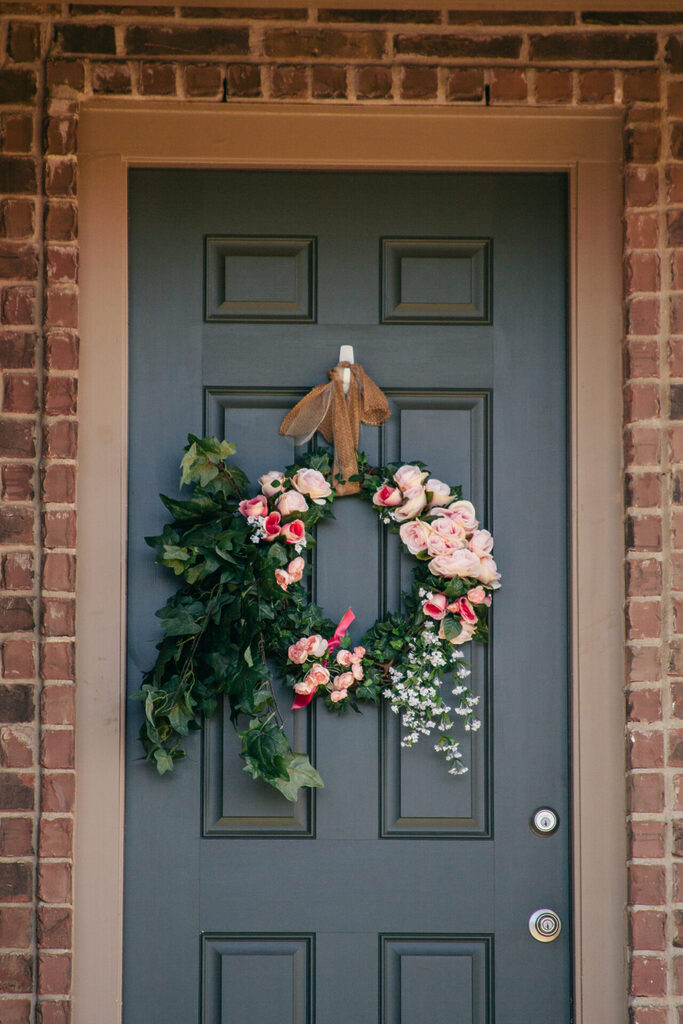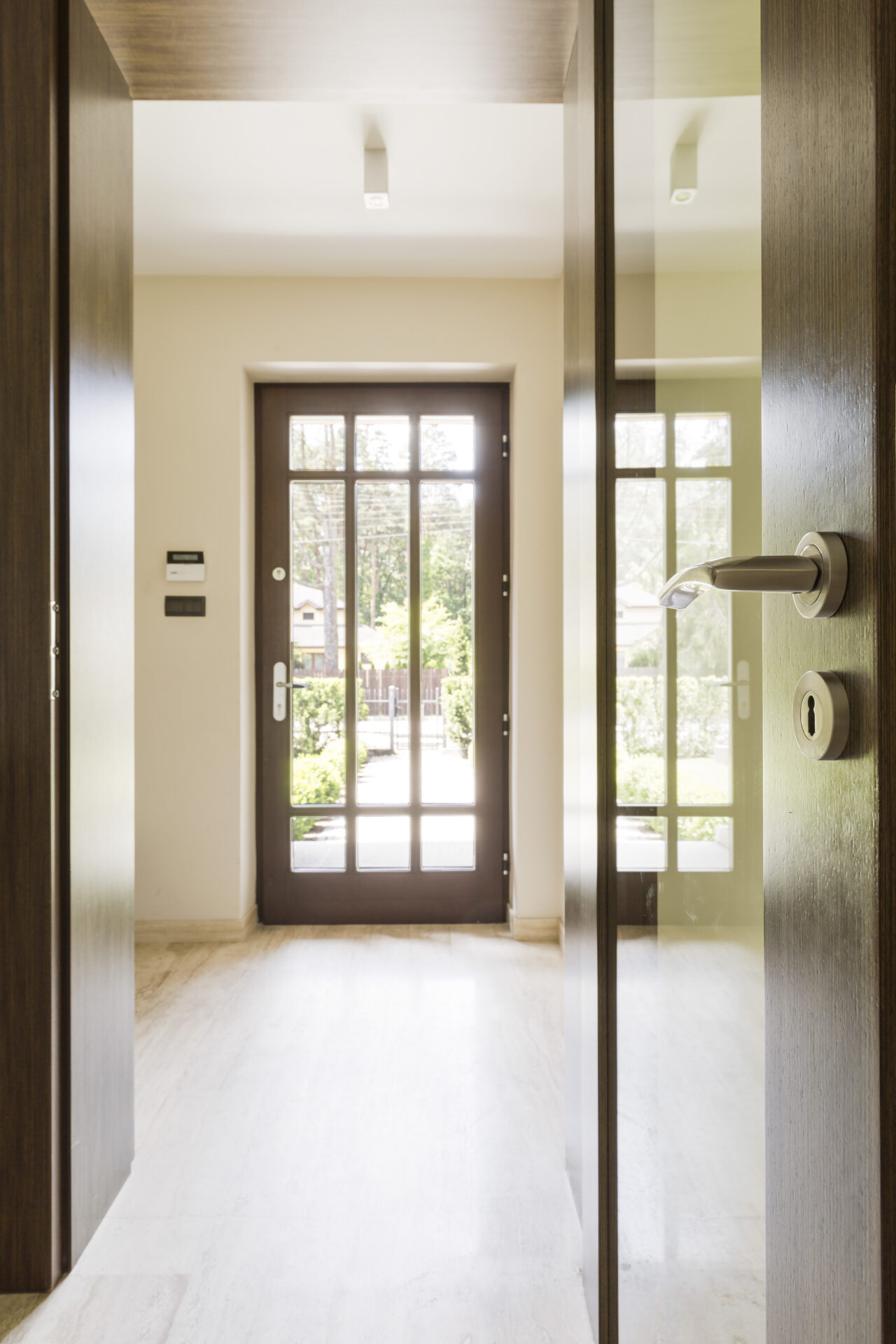Last Updated on 13 May 2025 by Team GFD
Draught Proofing Front Door: Why is it so important?
Draught proofing your front door is important because it keeps your home warmer, reduces energy bills, and helps prevent damp and mould.
What’s Included in This Article:
- Why draught-proofing is important
- Common draught entry points
- How to identify a draught
- Draught proofing methods
- Best insulated door options from GFD Homes
- FAQs
(Estimated reading time: 3–5 minutes)
Introduction
A cold breeze near your front door isn’t just uncomfortable—it’s a sign your home is losing heat and energy.
Whether your door is decades old or relatively new, gaps, worn seals, and poor insulation can all contribute to draughts that chill your space and inflate your heating bills. The good news? Draught-proofing your front door is a cost-effective way to improve comfort and reduce energy loss.
Why Draught-Proofing Is So Important
Keeps Warm Air In
Even the smallest gaps can let cold air in and warm air out, making your heating system work harder. Effective draught-proofing improves your home’s thermal performance.
Saves Energy & Money
According to the Energy Saving Trust, properly sealing up doors and windows could save the average UK household up to £60 per year.
Reduces Damp and Mould Risk
Draughts cause uneven temperatures that can lead to condensation and moisture build-up—ideal conditions for mould.
Improves Comfort Instantly
You’ll notice the difference immediately. No more standing near a cold entryway or hearing wind whistle through door gaps.
A warm home starts at the front door—seal it properly, and the whole house benefits.
Common Draught Entry Points
Around the Frame
Wood can warp and uPVC can shrink over time, leaving visible or invisible gaps.

Letter Plates
One of the most common sources of heat loss, especially if it’s loose or poorly insulated.
Keyholes
Keyholes often allow a direct draught path into your hallway.
Thresholds
Even modern doors may have slight gaps at the bottom unless sealed with threshold strips or brush seals.
How to Identify a Draught
Visual & Touch Test
On a cold day, feel around the doorframe for a noticeable change in temperature or breeze.
Smoke or Candle Test
Light a candle or stick of incense and pass it near the door edges—movement in the flame/smoke means air is coming through.
Check Light Gaps
Stand outside in the dark and have someone shine a torch from inside—if light shines through, air can too.
Draught-Proofing Methods
Self-Adhesive Foam or Rubber Seals
These are easy to apply around door frames and are great for quick fixes.
Brush Strips or Door Bottom Seals
Install these along the bottom of the door to block air that sneaks in underneath.
Letterbox Draught Excluders
Spring-loaded or bristle-style covers can be installed behind or over existing letter plates.
Keyhole Covers
Small metal discs that swing across the keyhole when not in use—cheap, easy, and effective.
Heavyweight Draught Excluder Rolls
Placed along the inside of the door at the bottom—simple but effective, especially in older homes.
When Should You Replace the Door Instead?
Signs It’s Time for an Upgrade:
- The frame is warped or rotting
- The door no longer fits snugly or closes easily
- There’s visible damage or large gaps
- You still feel cold despite sealing efforts
Best Insulated Door Options from GFD Homes:
- Solidor Composite Doors – solid timber core, thermal and acoustic insulation
- Door-Stop Composite Doors – affordable and efficient
- Comp Door Gloucester – modern designs with low U-values
- Smart Signature Aluminium Doors – aluminium with thermal breaks and sealing
All these doors feature tightly engineered seals and high-performance thresholds.
Draught-Proofing in Every Season
- Spring/Summer: Inspect seals and frames, especially after heavy rain or heat expansion.
- Autumn: Prep your entrance before the first cold snap—install seals and draught-proofing kits.
- Winter: Reinforce with door curtains or secondary measures like interior draught excluders.

Pro Tip: Combine draught-proofing with new door furniture for a full upgrade in comfort and style.
Conclusion
A warmer, more energy-efficient home could be just one sealed door away. Whether you opt for quick fixes or decide it’s time for a full upgrade, draught-proofing your front door is a smart move—especially as energy prices continue to rise.
At GFD Homes, we offer both DIY-friendly tips and premium composite and aluminium doors with market-leading insulation and sealing systems.
Close the gap—literally—and enjoy a home that’s warmer, quieter, and more efficient.
📞 Got questions or ready to upgrade? Call us on 01642 309576
💡 Want more home improvement advice? Check out the GFD Blog for expert guides and product ideas.
FAQs about Draught Proofing Front Door
Can I draught-proof a fire-rated door?
Yes—but only with FD30-rated seals and hardware. GFD’s fire doors meet both safety and thermal efficiency standards.
What if I live in a listed property?
Temporary measures like brush seals and weighted draught stoppers can be used without impacting the building.
Do composite doors really prevent draughts?
Yes. Their multi-layered construction and modern sealing systems make them one of the best options on the market.
What’s the difference between draught-proofing and insulation?
Draught-proofing stops air leaks; insulation retains heat. The two work hand-in-hand for energy savings.
Your home deserves the best – these reads will help…
- Home Extension Ideas: What’s Trending in 2025 for Light, Space & Style
- Double Doors: Explore French Door Styles, Glazing Options & Entrance Ideas
- Trade Draught Proofing Front Door: looking for trade prices? Visit our trade site, The Trade Village.

